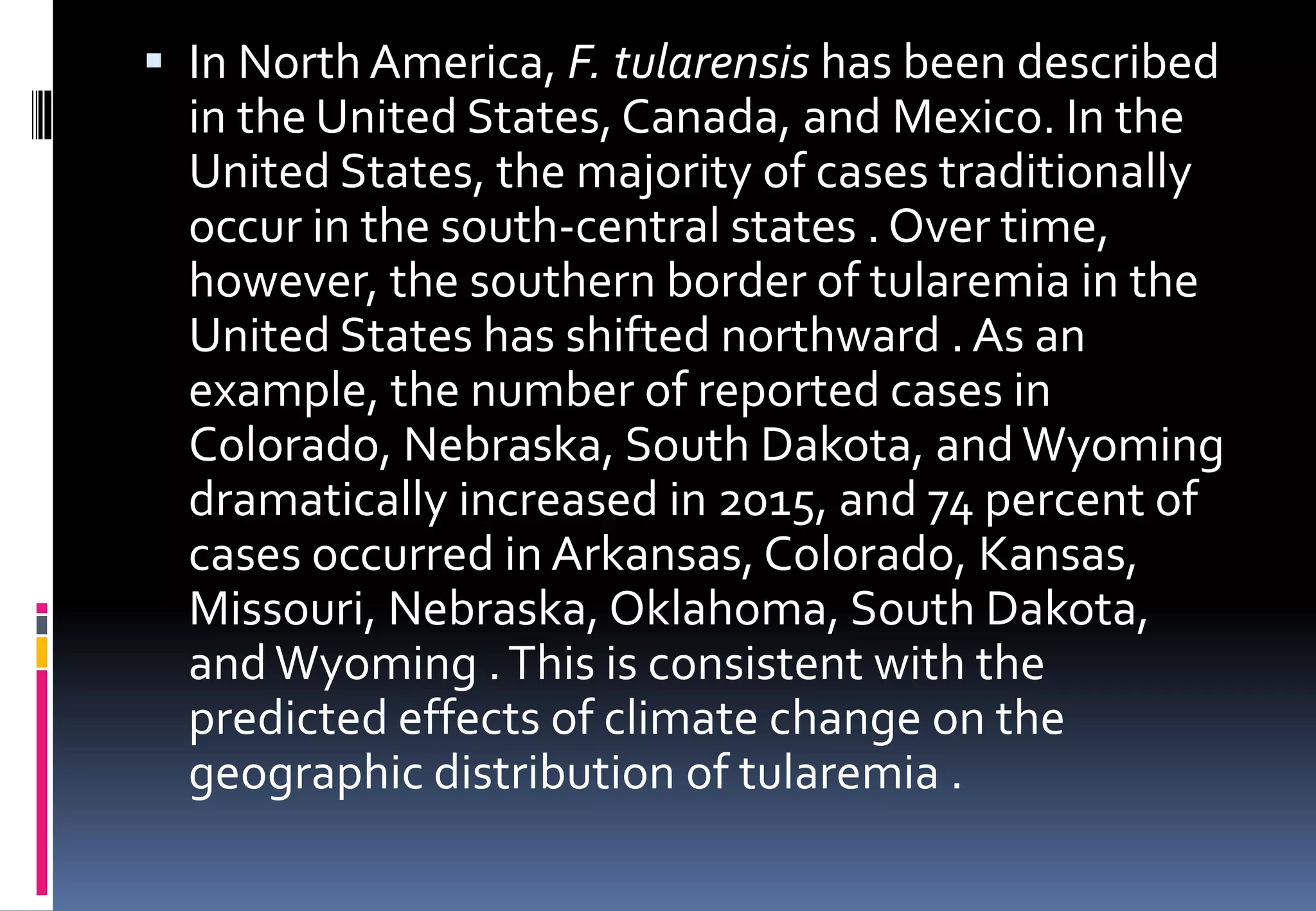Tularemia is a rare infectious disease caused by the bacterium Francisella tularensis. It is commonly found in animals like rabbits and rodents and can infect humans through insect bites, contact with infected animal skin or meat, or inhalation. Symptoms vary depending on how the disease enters the body but can include ulcers, swollen lymph nodes, eye infections, and flu-like symptoms. While it poses a risk to humans, tularemia does not naturally occur in people. Diagnosis involves blood tests and cultures, and treatment consists of antibiotics for 10-21 days.












